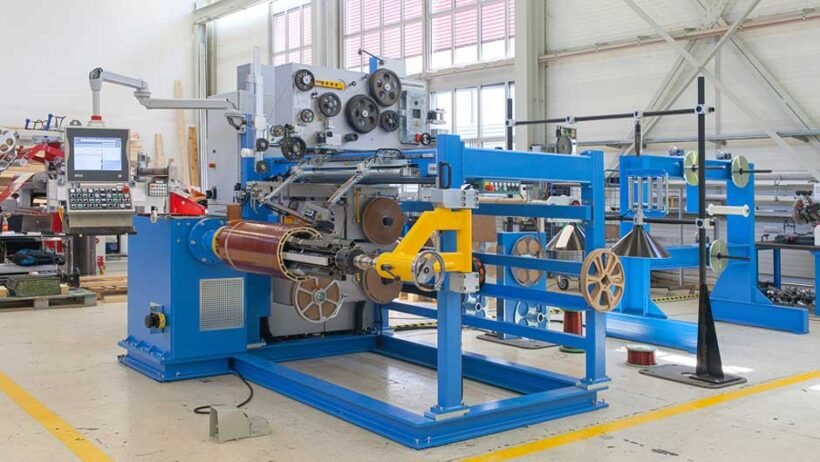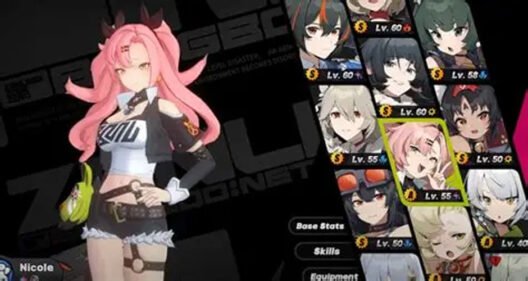Wire winding machines play a critical role in industries ranging from electrical manufacturing and automotive to aerospace and telecommunications. These machines are essential for producing precise coils used in motors, transformers, and electronic components. However, because they deal with moving parts, electrical components, and high-tension wire, they present unique safety challenges. At the same time, quality assurance is non-negotiable—poorly wound coils can cause product failures, overheating, or even electrical hazards.
To help manufacturers, operators, and quality managers, this checklist outlines key wire winding machine safety protocols and quality control measures. Whether you’re training new employees or auditing your production floor, these steps provide a reliable framework for safe and consistent operation.
Why Safety & Quality Matter in Wire Winding
Before diving into the checklist, it’s important to recognize why safety and quality are so intertwined in wire winding operations:
- Operator Protection: High-speed spindles, sharp wires, and tension systems can cause injuries if not handled carefully. Safety ensures operators remain free from harm.
- Product Reliability: A coil with inconsistent tension or poor layering can result in short circuits, reduced efficiency, or catastrophic failure in the field.
- Regulatory Compliance: Many industries require adherence to international standards (ISO, IEC, UL). Meeting these standards is both a legal and competitive necessity.
- Cost Savings: Reducing rework, scrap, and downtime directly improves profitability.
With this in mind, let’s break down the checklist.
Safety Checklist for Wire Winding Machines
- Personal Protective Equipment (PPE)
Operators should wear:
- Safety glassesto protect against wire fragments or breakage.
- Glovesthat allow dexterity while preventing cuts or abrasions.
- Hearing protectionin environments where machines generate continuous noise.
- Protective clothingthat fits snugly and avoids loose fabric near rotating parts.
- Machine Guarding
- Ensure spindles, gears, and tension armshave proper guards.
- Guards must be in place before starting the machine.
- Emergency stops should be clearly visible and accessible.
- Electrical Safety
- Verify all machines are properly grounded.
- Inspect power cords and plugs regularly for damage.
- Ensure lockout/tagout (LOTO) procedures are followed during maintenance.
- Operator Training
- Only trained and authorized personnel should run the machine.
- Training must include startup/shutdown procedures, emergency protocols, and troubleshooting basics.
- Operators should know how to safely handle wire reels, which can be heavy and unwieldy.
- Workspace Organization
- Keep the area free from clutter and tripping hazards.
- Store reels and spools securely to prevent rolling or falling.
- Maintain adequate lighting around the winding area.
- Fire Safety
- Since some wire coatings and insulating materials are flammable, fire extinguishers should be nearby.
- Regularly check machines for overheating components.
Quality Checklist for Wire Winding Machines
- Wire Inspection
- Confirm the wire meets specifications (gauge, insulation type, and material).
- Check for surface defects such as scratches, oxidation, or kinks before winding.
- Tension Control
- Use calibrated tension devices to maintain consistent wire tension.
- Verify that automatic tension adjustments are functioning correctly.
- Document tension settings for repeatability across batches.
- Layering Accuracy
- Ensure wire is evenly layered without overlaps or gaps.
- Use digital monitoring systems or vision inspection tools when available.
- Pay special attention to crossover points, which are prone to errors.
- Coil Dimensions
- Measure coil length, width, and height against design specifications.
- Check that the final coil fits within housing tolerances.
- Insulation Integrity
- Inspect for insulation nicks or abrasions caused during winding.
- Test insulation resistance periodically to confirm electrical integrity.
- Automated System Calibration
- Regularly calibrate counters, guides, and traversing mechanisms.
- Review software settings to ensure the programmed winding pattern matches the design.
- Final Product Testing
- Perform electrical resistance tests.
- For critical applications, conduct high-voltage insulation testing.
- Record results as part of quality assurance documentation.
Maintenance Practices to Support Safety & Quality
Even the best safety and quality protocols fail without consistent maintenance. Preventive maintenance should be part of your checklist:
- Lubrication: Keep moving parts properly lubricated to avoid friction, overheating, and premature wear.
- Alignment Checks: Misalignment of spindles or guides leads to defective coils.
- Sensor Testing: Test sensors and alarms to ensure they function during wire breaks or jams.
- Cleanliness: Dust and debris can interfere with winding accuracy and increase fire risks.
- Spare Parts Inventory: Stock critical parts like belts, pulleys, and sensors to minimize downtime.
Digital Tools for Modern Wire Winding Operations
Many manufacturers now integrate smart technologies into their wire winding machine operations. These include:
- IoT Sensors: Monitor tension, temperature, and vibration in real time.
- Predictive Maintenance Software: Uses data to predict when failures are likely, reducing unexpected downtime.
- Automated Quality Control: Cameras and AI systems detect winding inconsistencies that may be invisible to the human eye.
- Data Logging: Tracks winding parameters and results, ensuring traceability for audits and compliance.
By leveraging these tools, manufacturers can achieve both higher productivity and improved safety outcomes.
Common Mistakes to Avoid
Even with a checklist in place, common oversights can compromise both safety and quality:
- Skipping pre-operation checks: Small defects in wire reels or machine components can snowball into major problems.
- Improper tension setup: Over-tension leads to insulation damage, while under-tension causes loose coils.
- Neglecting PPE: Operators sometimes skip gloves or glasses for convenience, risking serious injury.
- Ignoring warning signs: Strange noises, vibration, or heat are early indicators of machine issues.
- Inadequate training: Assuming new employees will “pick it up as they go” often leads to costly mistakes.
Avoiding these pitfalls requires discipline and accountability across the production team.
Building a Culture of Safety & Quality
A checklist is only as effective as the culture behind it. To build lasting practices:
- Encourage Reporting: Operators should feel comfortable reporting hazards, defects, or near misses without fear of blame.
- Regular Audits: Schedule routine audits to ensure compliance with safety and quality standards.
- Continuous Training: Update training programs as new technology and standards evolve.
- Reward Compliance: Recognize teams and individuals who consistently follow safety and quality practices.
This culture not only reduces risks but also increases employee morale and product reliability.
Conclusion
A wire winding machine may seem like just one piece of equipment on the production floor, but its role in ensuring product integrity and operator safety is enormous. By following a structured safety and quality checklist, manufacturers can reduce risks, improve consistency, and meet demanding industry standards.
The checklist outlined above—from PPE and machine guarding to tension control and digital monitoring—provides a framework that organizations can adapt to their unique environments. With regular training, preventive maintenance, and a culture of accountability, companies can ensure that their wire winding operations remain both safe and world-class in quality.








